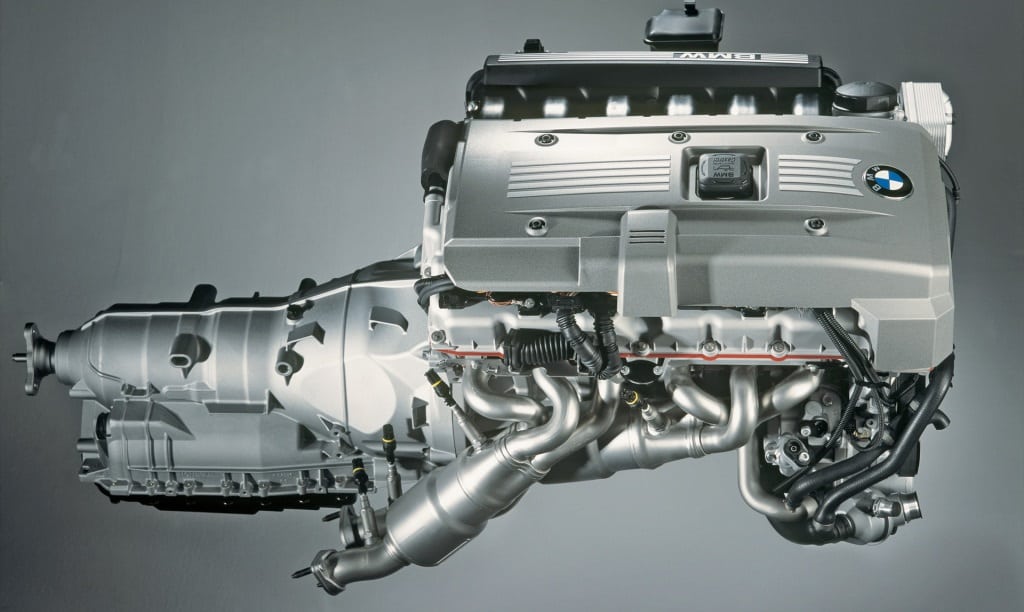
N52 engine from BMW - characteristics of the installed unit, including in the E90, E60 and X5
Content
The in-line six with standard injection is slowly falling into oblivion. This is related to the evolution of the requirements of BMW customers, as well as the introduction of restrictive exhaust emission standards, which force designers to use other solutions. The N52 engine is one of the last models considered to be typical BMW units. What is worth knowing about it?
N52 engine - basic information
The unit was produced from 2004 to 2015. The goal of the project was to replace the M54 version. The debut fell on the E90 3-series model, as well as the E65 6-series. An important point was that the N52 was BMW's premiere product when it comes to water-cooled units.
It also uses a composite construction - magnesium and aluminum. The engine has won numerous awards, including a place on Ward's Top 10 list in 2006 and 2007. Interestingly, there was no M version of this engine.
The twilight of the engine was in 2007. At that time, BMW decided to slowly take the motorcycle out of the market. Restrictive combustion standards had the greatest impact on this - especially in countries such as the USA, Canada, Australia and Malaysia. The unit that replaced it was the N20 turbocharged engine. The end of production of the N52 took place in 2015.
The combination of magnesium and aluminum - what effects have been obtained?
As mentioned earlier, the construction is based on a block made of a magnesium-aluminum composite. Such a connection was used due to the properties of the first of the mentioned materials.
It has a lower weight, however, it is susceptible to corrosion and can be damaged by high temperatures. That is why it was combined with aluminum, which is extremely resistant to these factors. The crankcase housing was made of alloy, with aluminum covering the exterior.
Design solutions in the N52 motorbike
Designers decided to use electronic throttle control and variable valve timing - the system is known as double-VANOS. More powerful units were also equipped with a three-stage variable-length intake manifold - DISA and Valvetronic system.
Alusil was used for cylinder liners. It is a hypereutectic aluminum-silicon alloy. The non-porous structure of the material retains oil and is an ideal bearing surface. Alusil replaced the previously used Nikasil, which also affected the elimination of corrosion problems when using gasoline with sulfur.
Designers also used a hollow camshaft to reduce weight, as well as an electric water pump and a variable displacement oil pump. The N52 engine is fitted with a Siemens MSV70 DME control system.
N52B25 units
The first variant had a capacity of 2,5 liters (2 cc). It was installed in cars intended for the European market, as well as the American and Canadian. Production lasted from 497 to 2005. The N52B25 group includes varieties with the following parameters:
- with 130 kW (174 hp) at 230 Nm (2005-2008). Installation in BMW E90 323i, E60/E61 523i and E85 Z4 2.5i;
- with 150 kW (201 hp) at 250 Nm (2007-2011). Installation in BMW 323i, 523i, Z4 sDrive23i;
- with 160 kW (215 hp) at 250 Nm (2004-2013). Installation in BMW E83 X3 2.5si, xDrive25i, E60/E61 525i, 525xi, E90/E91/E92/E93 352i, 325xi and E85 Z4 2.5si.
N52B30 units
This variant has a capacity of 3,0 liters (2 cc). The bore of each cylinder was 996 mm, the stroke was 85 mm, and the compression ratio was 88:10,7. The difference in power was influenced by the components used, e.g. intake manifolds and control software. The N52B30 group includes varieties with the following parameters:
- with 163 kW (215 hp) at 270 Nm or 280 Nm (2006-2011). Installation on BMW 7 E90/E92/E93 325i, 325xi, E60/E61 525i, 525xi, E85 Z4 3.0i, E82/E88 125i, E60/E61 528i, 528xi and E84 X1 xDrive25i;
- with 170 kW (228 hp) at 270 Nm (2007-2013). Installation in BMW E90/E91/E92/E93 328i, 328xi and E82/E88 128i;
- with 180 kW (241 hp) at 310 Nm (2008-2011). Installation in BMW F10 528i;
- with 190 kW (255 hp) at 300 Nm (2010-2011). Installation in BMW E63/E64 630i, E90/E92/E93 330i, 330xi, E65/E66 730i, E60/E61 530i, 530xi, F01 730i, E89 Z4 sDrive30i, E84 X1 xDrive28i, E87 130i and F25 X3 28i;
- with 195 kW (261 hp) at 315 Nm (2005-2009). Installation in BMW E85/E86 Z4 3.0si and E87 130i;
- with 200 kW (268 hp) at 315 Nm (2006-2010). Installation on E83 X3 3.0si, E70 X5 3.0si, xDrive30i, E63/E64 630i and E90/E92/E93 330i, 330xi.
Engine faults n52
The unit is considered successful. This does not apply to the six-cylinder models fitted to the 328i and 525i, which have been recalled due to a repeated design flaw resulting in a short circuit of the crankcase ventilation valve heater.
On the other hand, standard problems include failure of the VANOS system, hydraulic valve actuators, or failure of the water pump or damage to the thermostat. Users also paid attention to leaky valve covers, oil filter housings, or uneven idling.